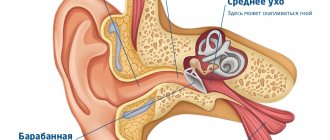November 3, 2020
When the head of the male organ becomes red and swollen, this is an inflammation called balanitis. When the foreskin is also involved in the process, the disease is called balanoposthitis. Redness is accompanied by itching, burning, pain when urinating, and sometimes mucus leaking from the urethra. The disease cannot be neglected; it can spread throughout the genitourinary system, provoke phimosis and lead to necrosis of the head.
Causes of redness and itching of the head in men
Symptoms of inflammation are caused by:
- Fungal infection - occurs in 20% of cases, the spots are characterized by the presence of a specific white lumpy coating, the smell of sauerkraut or fish.
- Sexual infections - chlamydia, ureaplasma, gonococci and other microbes can cause plaque on the head in men, redness and swelling of the tissues; Discharge from the urethra does not always occur.
- Dysbacteriosis is a violation of the bacterial microflora, when bacteria that are usually not characteristic of it, for example from the intestines, settle on the scalp.
- Allergies to shower gel, lubricants, synthetic underwear - can only appear on the scalp, without affecting other parts of the body; characterized by red pimples and peeling, the spots are very itchy.
Redness, swelling and other manifestations of inflammation intensify after sexual intercourse and ejaculation.
To identify fungi or bacteria that cause redness of the glans in men, 2 tests are done: PCR and culture of smears from the urethra and the skin of the penis.
When the presence of microbes is not detected, basic immunological tests are performed. If they are rejected, a consultation with an allergist is prescribed.
What complications can there be?
To effectively treat redness of the glans and foreskin, you must consult a doctor at the first sign.
Otherwise, cicatricial phimosis will cause discomfort. This is a pathology that is characterized by deformation of the tissues of the penis. As a result of constant inflammation and deformation, scars form on the tissues. The foreskin gradually narrows, causing the development of phimosis.
In the absence of therapy at this phase, paraphimosis develops - a pathological condition in which the head is pinched. The condition is usually accompanied by painful swelling.
If the form is advanced and without timely treatment, surgical intervention may be required. Also a serious danger is posed by atrophy of the head receptors with a decrease in sensitivity, which, in turn, leads to erectile dysfunction and decreased libido. This negatively affects the quality of sexual life.
With prolonged redness of the head of the penis and foreskin, without timely medical intervention, urethritis develops. Gradually, the infection leads to the development of complications: prostatitis, cystitis, pyelonephritis, orchiepididymitis.
Causes of the disease
The main factors for the spread of infection are:
- poor hygiene;
- the use of antiseptic solutions after sexual intercourse;
- frequent washing of the genitals with soap, leading to skin irritation;
- mechanical damage to tissue integrity;
- uncontrolled treatment with antibacterial drugs;
- anatomical features of the structure;
- hormonal imbalances;
- the presence of certain autoimmune diseases;
- infections.
The disease can be caused not only by sexual (genital) contact, but also by oral and anal contact. Sometimes six months pass before the first symptoms appear.
Symptoms
- Burning in the genital area.
- Pain during sexual intercourse, when urinating.
- Swelling, sharp and burning sensation.
- Exposing the head becomes difficult and pain occurs.
If you have unpleasant symptoms, there is no need to self-medicate and try to find an ointment or gel on your own that will relieve burning and swelling. This always leads to the development of even greater complications, and the infection goes deep into the genitourinary tract.
What else are associated with spots on the head in men?
Hyperemia, red pimples, itching on the head of the penis are caused by diabetes mellitus, kidney and liver diseases. For people over 30 years of age who have a family history of diabetes, we check their blood for glucose. If necessary, we determine glycated hemoglobin, perform an ultrasound of the abdominal organs, determination of bile acids and blood nitrogen, and a general examination of blood, urine and feces.
Redness and discomfort on the penis occur with increased sensitivity or dry skin. Tight underwear, stay in a hot climate, and prolonged unsanitary conditions lead to the accumulation of sweat and smegma in the fold of the foreskin. Under these conditions, the usual skin flora - staphylococci and streptococci - are activated. Their increased reproduction will cause inflammation. The same thing happens when intestinal bacteria from the anus get on the foreskin.
Why do red dots and spots appear on the penis?
This sign signals the obvious presence of a pathological process in the body, both infectious and non-infectious.
The first group includes diseases that are often transmitted during unprotected coitus. The causative agents are viruses, bacteria or fungi. Red spots and dots may appear during the development of:
- candidiasis - in addition to isolated formations, a man is bothered by severe itching of the phallus, a whitish coating on the mucous membrane and white curdled discharge from the urethra;
- genital herpes - in this case, blisters with watery contents appear on the head, accompanied by severe unbearable itching;
- chlamydia - with this pathology, red spots on the head of the penis do not itch or hurt, but pus is released from the urethra, and the patient complains of pain in the scrotum, perineum and lower back;
- HPV - the main sign of the disease is a profuse rash; after some time, the rash increases in size, but there is no pain or itching;
- trichomoniasis - in this case, the spots are the result of irritation of the mucous membrane with pus released from the urethra; in addition to these symptoms, the man complains of swelling of the head and pain when urinating;
- balanitis and balanoposthitis - with these diseases, red spots on the penis itch, a burning sensation when urinating is disturbed, a white coating will be noticeable on the mucous membrane;
- syphilis - in the case of this pathology, one pimple turns into an ulcer, the formation does not hurt or itch, disappears after a while, and the patient may think that he has recovered without treatment (but this is a mistaken opinion).
There are other infectious diseases that can cause scarlet rashes to form on the penis. For example, scabies. Its causative agent is the scabies mite. When it penetrates the skin, a small rash occurs, accompanied by severe itching. The patient scratches the problem area, resulting in ulcers. Itchy pimples on the phallus are also characteristic of a viral infection such as molluscum contagiosum.
It's also worth noting that small red spots on the penis that turn into watery, itchy blisters can occur with chickenpox. In this case, the patient’s body temperature will rise, weakness and headache will occur. The rash associated with this disease usually appears on the skin all over the body.
Actions for redness of the glans in men: how to treat
The most dangerous tactic is to try to use any ointments or other medications yourself before consulting a doctor. In 90% of cases, this does not help, distorts test results, and makes them false negative. Until the causes are clarified and cured, you need to stop having sex.
When inflammation on the head of the penis does not go away after careful hygiene, changing linen or detergents, contact our clinic. At the Clinic Dr. AkNer you will receive all the necessary tests and expert advice.
Urologist, andrologist Akopyan Nerses Grigorievich.
Back to list of articles
The most common cause of redness of the foreskin and head of the penis
The most common cause of redness of the foreskin and head of the penis is a sexually transmitted infection.
The introduction of STI pathogens into the tissues of the genitourinary tract causes the development of inflammatory phenomena in them - hyperemia, swelling, pain.
The development of inflammation is facilitated by weakening of the body's immunity against the background of hypothermia, stress, alcohol abuse, and taking antibiotics.
Note
There are no special signs indicating the cause of the itching. Therefore, in any case when itching occurs, a thorough examination is necessary.
Reference and information material
Author of the article
Khaldin Alexey Anatolievich
Dermatovenerologist, clinical immunologist, MD, professor
Loading...
Take other surveys
Sexual infections in men and problems with conception
As mentioned above, sexually transmitted infections can lead to problems conceiving a child or infertility. The thing is that pathogenic microorganisms present in a man’s body, first of all, have a negative impact on the quality of sperm, causing disturbances in sperm motility. In addition, the morphological properties of sperm also change negatively.
Some sexually transmitted infections over a long period of time can lead to obstruction of the vas deferens, which also prevents normal conception. Infertility can also develop as a result of complications of sexual diseases, such as orchiepidymitis, prostatitis, the presence of leukocytes in semen, etc.
We must not forget that, being infected, a man can infect his partner. Pelvic inflammatory disease is just as dangerous for women as it is for men, causing serious complications and infertility.
Common sexually transmitted infections in men
There are several dozen sexually transmitted infections, the most common of which are:
- syphilis (caused by Treponema Palidum)
- chlamydia (caused by Chlamydia trachomatis)
- gonorrhea or gonorrhea (caused by Neisseria Gonorrea)
- genital herpes (causative agent - Herpes simplex virus type 1/2)
- trichomoniasis (caused by Trichomonas vaginalis)
- human papillomavirus (causative agent - HPV (HPV))
- gardnerellosis (pathogen: Gardnerella vaginalis)
- mycoplasmosis (pathogen - Mycoplasma genitalum / hominis)
- Cytomegalovirus (pathogen - Cytomegalovirus) and others.
All these diseases pose a serious threat not only to the male body, but also to the body of his partner. Against the background of a long-term inflammatory process, healthy organ cells are damaged from which new, but atypical cells grow, which is the beginning of cancer.
Classification
Today, urologists distinguish several forms of the disease:
- Catarrhal.
The mildest form with which the pathological process begins. It is characterized by swelling of varying severity, redness of the skin with a burning sensation and itching. With a protracted process, an infection may occur with the formation of purulent (bacterial) discharge. Individual inflammatory elements may appear. - Erosive.
With this form, erosions form on the affected tissues. A whitish area of tissue with dead epithelial cells is formed, followed by bright red erosions and severe pain. Phimosis can develop as a complication. - Gangrenous.
The most severe form of the disease, in which general weakness and even fever develop. The ulcers deepen and fill with purulent contents, healing very slowly.
Causes of itching in the urethra
Itching in the urethra in men is often one of the symptoms of urethritis. It occurs during an inflammatory reaction in the urethra and can often be a leading sign of the disease. Due to inflammation of the urethra, specific and nonspecific urethritis are distinguished. The cause of specific urethritis is infections that are sexually transmitted. Nonspecific urethritis is caused by streptococci, staphylococci, E. coli, fungi and viruses. Itching occurs when the pathogen multiplies and can intensify as inflammation develops. Also factors leading to the appearance of urethritis include stones and sand in the kidneys. Itching that accompanies urolithiasis may increase with alcohol, spicy, salty, smoked foods, and may also be associated with urination problems.
Transmission routes
The main route of transmission of sexually transmitted diseases is any type of sexual contact. The more often a man changes sexual partners, the higher the risk of infection. In this case, you can become infected with several infections at once. Sometimes diseases of the genital area can be acquired through everyday contact with an infected person. So, even children who, for example, sleep in the same bed with infected parents can become infected. Infection also occurs when using common hygiene products.
Infection of the genital organs is possible when visiting public swimming pools, saunas and baths. Typically, those at greatest risk are men with weakened immune systems and older adults.
Advantages of treatment in our clinic
At the multidisciplinary clinic “MED CITY” in Kiev, high-level urologists will take care of your health.
In addition to traditional treatment methods, our clinic uses innovative laser technologies. The laser beam helps eliminate pathological microflora and accelerate the healing of affected tissues. This treatment is especially indicated for complicated forms with the formation of erosions. At the first signs of illness, contact our specialists! We will solve your problem at a high professional level! Make an appointment








